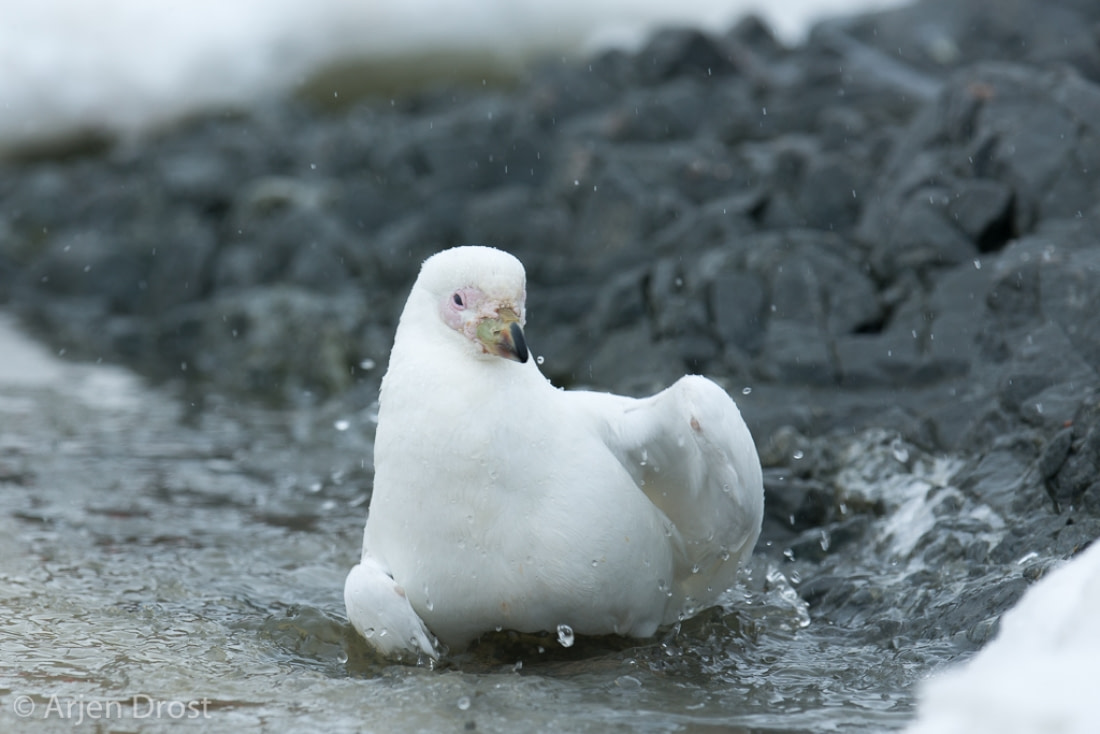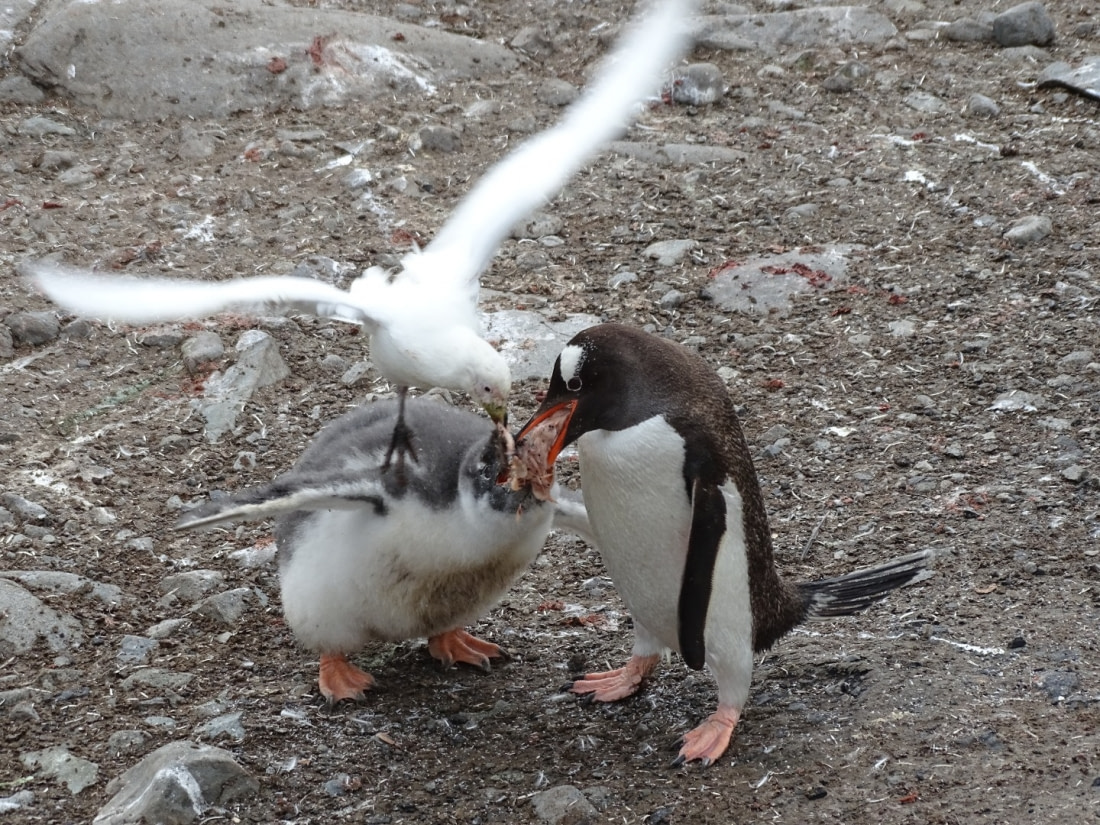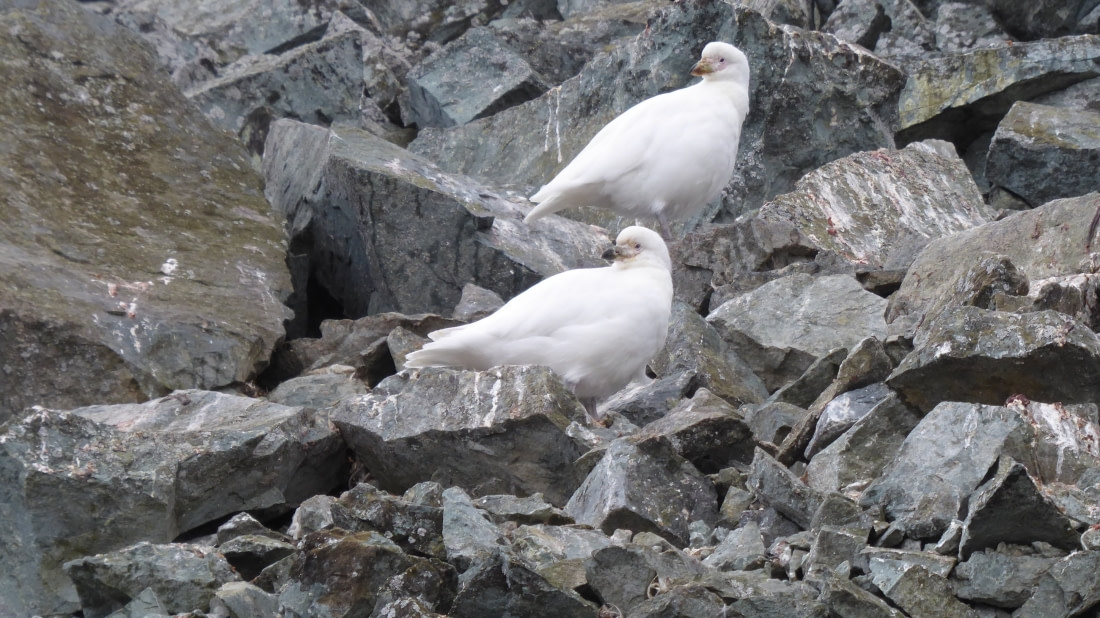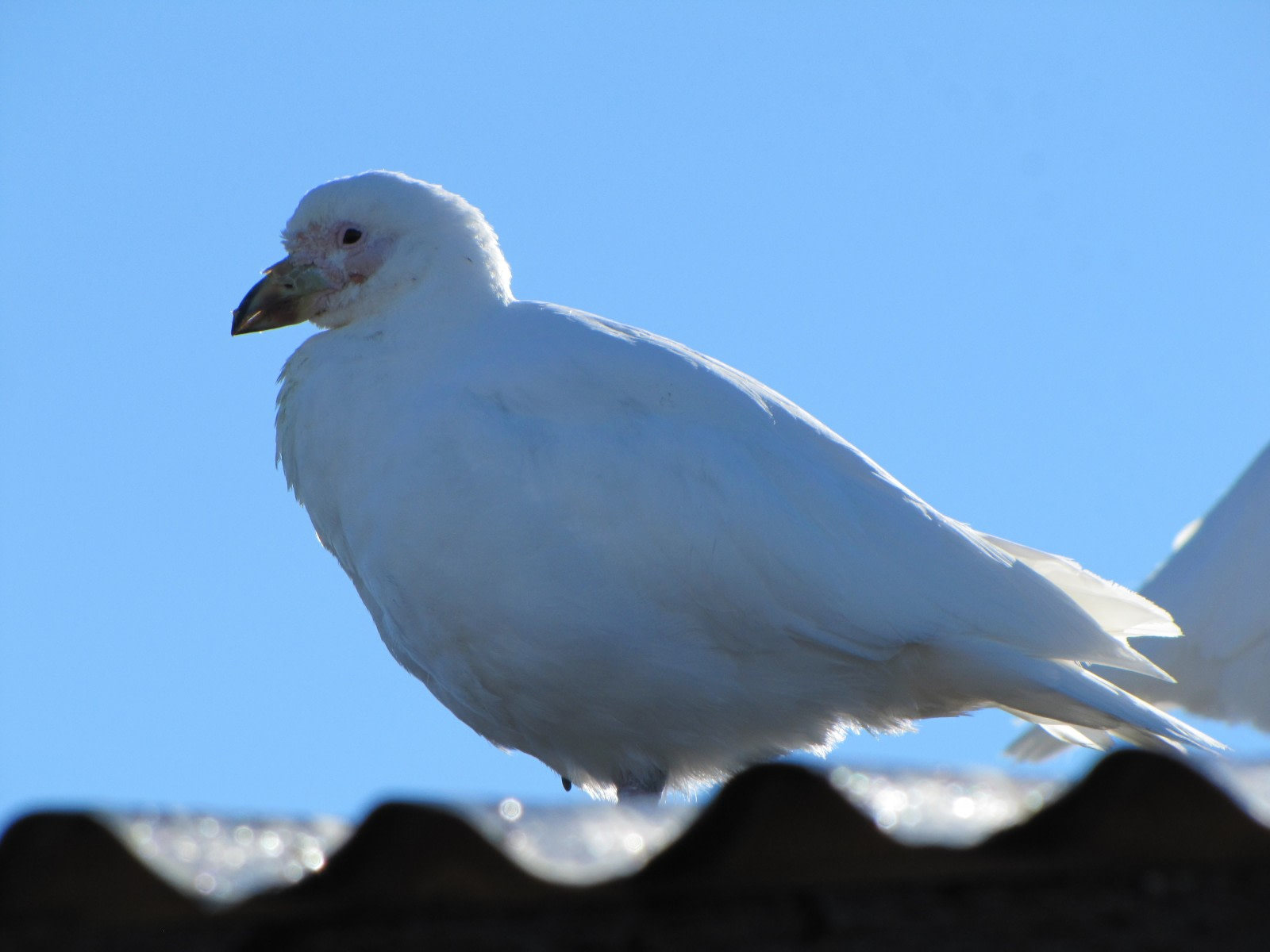Name: Snowy sheathbill, pale-faced sheathbill, greater sheathbill, paddy
Height: 34 - 41 cm (13 - 16 inches)
Weight: 460 - 780 grams (1 - 1.7 pounds)
Conservation status: Not globally threatened
Diet: Krill, fish, penguin eggs and chicks
Appearance: All white plumage, medium size, resembles a hen
How do snowy sheathbills feed?
Snowy sheathbills are omnivorous, often stealing food from penguins. They also consume algae, carrion, animal feces, and human refuse.

Snowy sheathbill social behavior
These birds stay close to their mates, nest sites, and breeding territories during warmer months. Unlike black-faced sheathbills, they are migratory, spending winters in Patagonia, Tierra del Fuego, and the Falklands from April to October. They live close to humans during this time and pause on icebergs during migrations.
What is the snowy sheathbill mating ritual?
Snowy sheathbills mate near cormorant or penguin colonies from October to March, laying eggs between December and January. Chicks are born in January or February and fledge in March. They usually lay two to three eggs, sometimes up to four, which they incubate for 28 - 32 days. Fledging takes about 50 - 60 days.

Snowy sheathbill average lifespan
The lifespan of snowy sheathbills in captivity or the wild is currently unknown.
How many snowy sheathbills are there?
There are an estimated 10,000 pairs of snowy sheathbills worldwide.
Snowy sheathbill predators
No definite predators are recorded for snowy sheathbills, though human chemical waste has occasionally poisoned their breeding areas.

Five follow-up snowy sheathbill facts
- Snowy sheathbills resemble hens but move like pigeons
- They breed on rocky coastlines in Antarctica
- They have been known to hitch rides on ships to South Africa and Europe
- Usually silent, they sometimes make a short, throaty, crow-like call
- They are a staff favorite, often walking up close and even riding on Zodiacs






